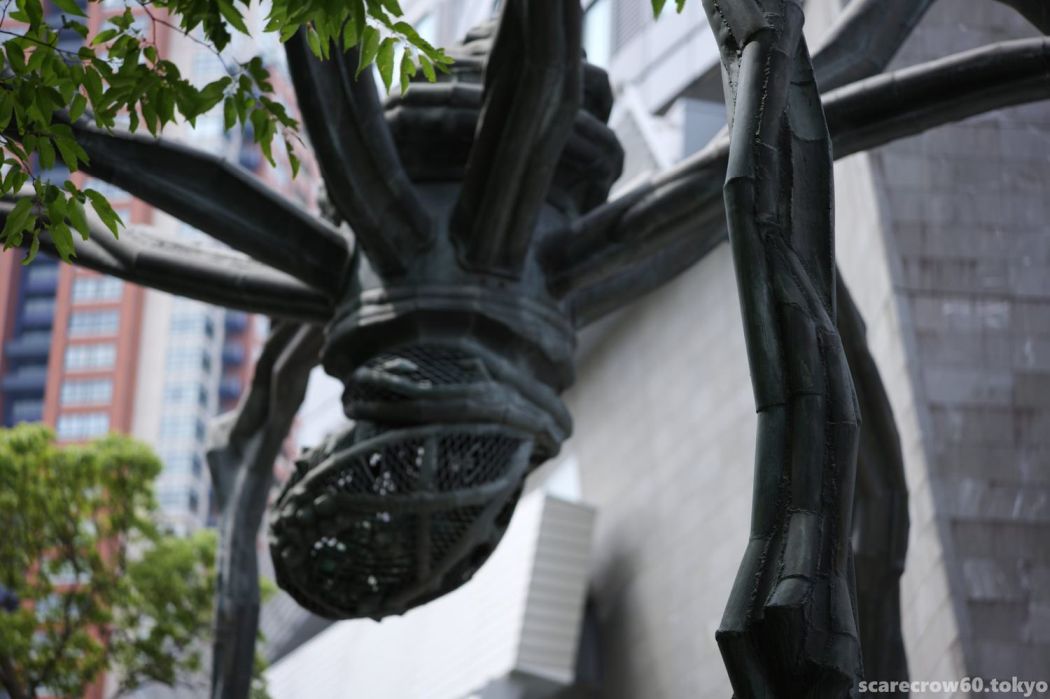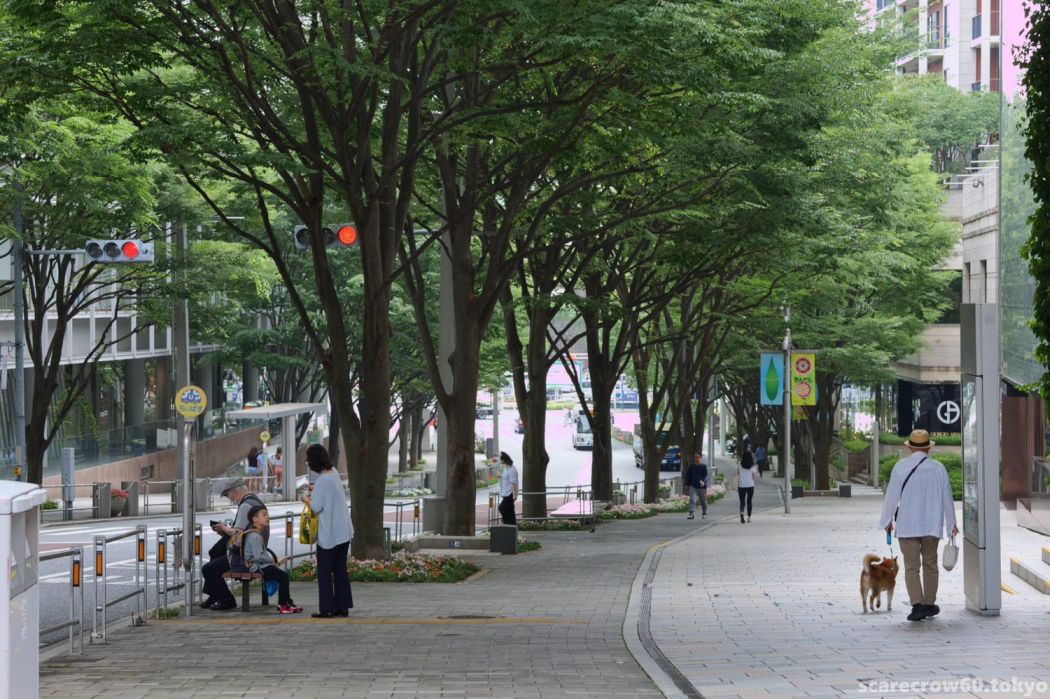I have previously written about my need for a mid-telephoto lens for my recently acquired full-size mirrorless SLR LUMIX S5, and since the kit lens LUMIX S20-60mm is a force to be reckoned with, I was looking for the “next one” that would make use of it while providing a bit more telephoto coverage.
I had some doubts, but in the end I bought this lens.
As you all know, this is the longest focal length 90mm medium telephoto prime lens in the SIGMA i-series. In addition to the cool looks of the metal barrel and hood, the lightweight and compact size of this lens was a big attraction for me.
I immediately went out to take some test shots during a break in the rainy season. I started with the monument in front of Mori Tower in Roppongi Hills.
First, I stopped down the lens to f/16 (note: the maximum aperture of the lens is f/22).
The focus position is on the “legs” in the foreground, but the depth of field was deepened so that the “head” and the wall of the building in the background are also clearly captured, and there is no slackness in the periphery of the image. The inorganic texture of the metal and the light, lively green of the plants are both perfect.
The middle aperture shot seemed a bit half-baked for this composition, so I skipped it and went with a wide aperture of f/2.8.
The focus plane is raised and the background is slightly blurred. Not bad. I should say that these four corners are a little loose rather than soft blur, what do you think?
Let’s look at another photo from a different location, this time including the middle aperture.
F16
F8
F4
F2.8
The flowers in focus are well resolved, and the building walls in the background are softly blurred without becoming dull, not quite “prodigal” but beautiful enough. F/2.8 is not particularly bright these days, but a 90mm lens seems to have no shortage of that. Even if it is bright, if the focusing surface is too thin, it will not be usable.
The color rendering is light and transparent, as is typical of Sigma lenses.
Aside from the tightness and bokeh, the other thing that concerns me, having used APSC lenses for a long time, is the angle of view. I have a hard time understanding the 90mm focal length on a full-size camera, so I tried shooting the same landscape at the same location with the S5 to see how the range of view differs with different focal lengths.
The following is a reminder, though I don’t think it will be of any use to anyone but myself. I made sure that the heart-shaped monument in the pond fit in the lower left intersection of the 3×3 segmented grid, and compared the results with several focal lengths of the standard zoom.
90mm
60mm
35mm
20mm
I guess you could say that the 90mm lens is a little bit more “pull” than the standard lens. But it’s not “telephoto” at all.
It’s 60mm on the APSC, which I’m used to, so I guess that’s true. There is a big difference between what you think you know by looking at the numbers in your head and what you feel in your body. On the other hand, seeing this also convinced me of how “ultra-wide” the full-size 20mm is.
Also, one small thing I noticed.
The knurled metal hood that SIGMA boasts about might be a bit of a pain.
It looks great, though.
Maybe I’m just clumsy, but it’s a little stiff and creaks when I put it on and take it off. When I flip it backwards, remove it, store it in my bag, take it out, and flip it front on again, repeating the process several times, I get a lot of bumps here and there on the camera and lens. I am not so nervous about this, but it is a little worrisome.
#this is just my personal opinion.
Well, this article has become rather long for a thin article, hasn’t it?
I have one or two more thoughts about this lens that I had as a perpetual beginner after trying it out, but I will leave them for the next article along with other photos I took at Roppongi Hills on this day.


![シグマ|SIGMA カメラレンズ 90mm F2.8 DG DN Contemporary [ライカL /単焦点レンズ]](https://thumbnail.image.rakuten.co.jp/@0_mall/biccamera/cabinet/product/6702/00000009546346_a01.jpg?_ex=128x128)

